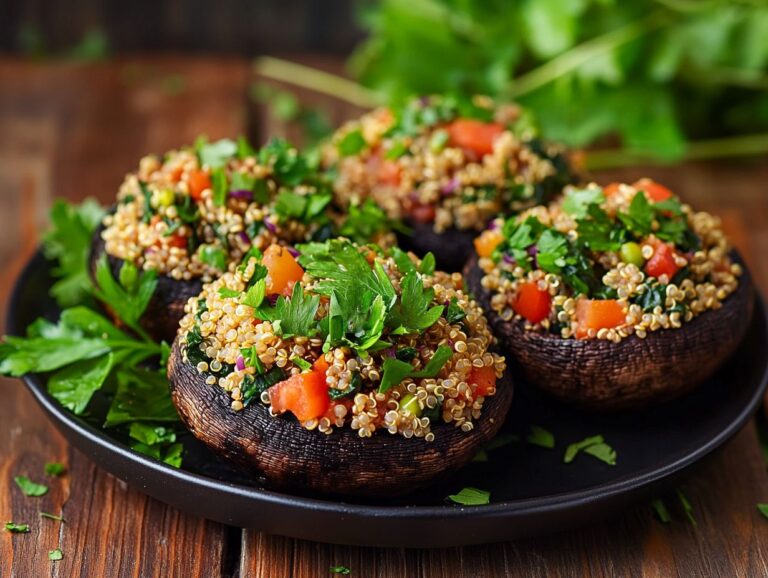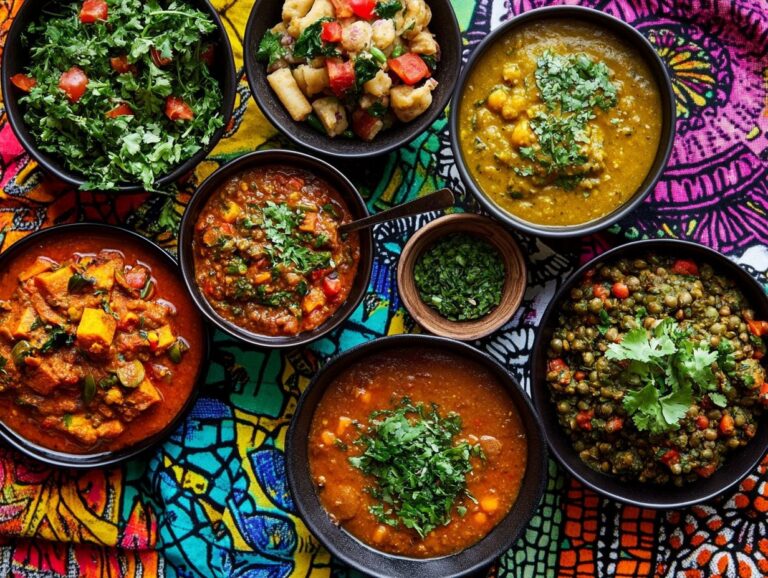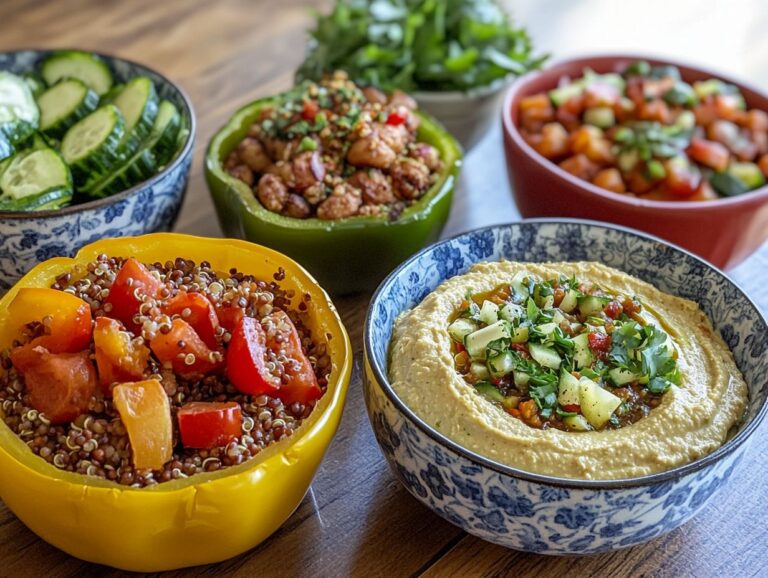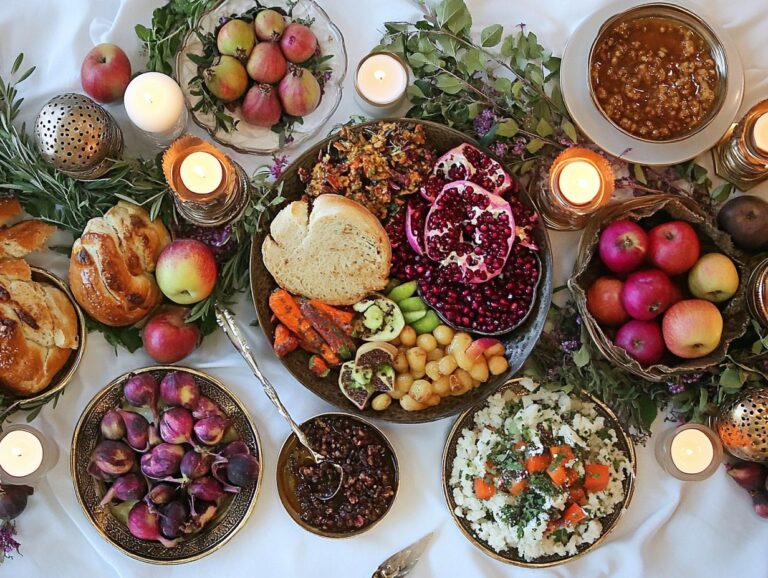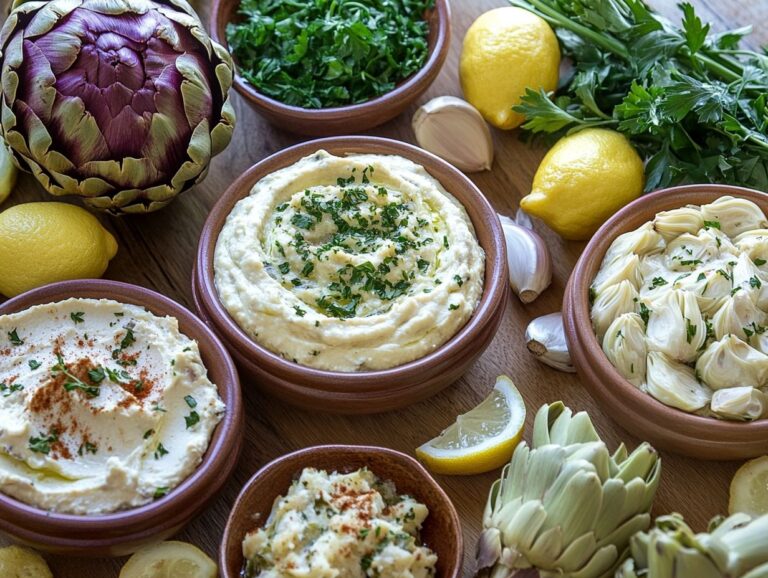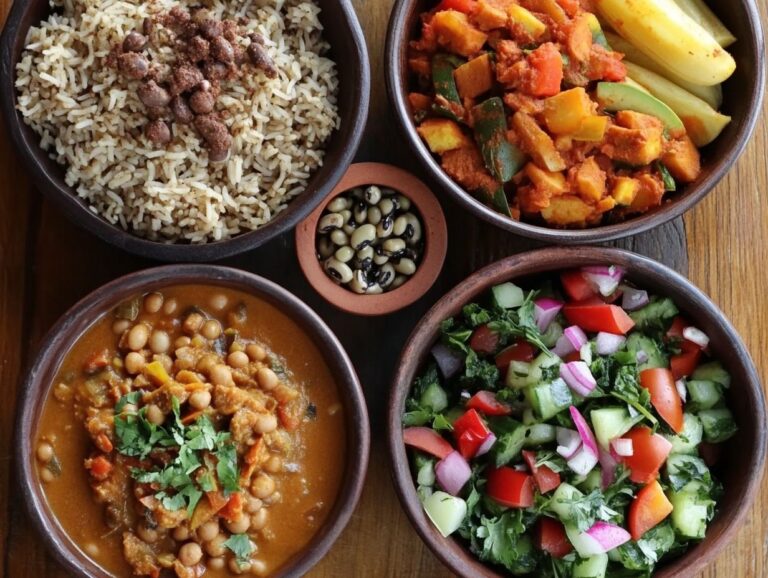Swedish cuisine is known for its simple and comforting flavors, often featuring hearty, meat-heavy ingredients. However, with a bit of creativity, traditional dishes can be transformed into delicious vegan versions without sacrificing their authentic essence. Iconic Swedish recipes include savory meatballs, herring salad, and various fish dishes, while indulgent desserts like cinnamon buns, apple cake, and chocolate balls are also popular staples. This guide offers helpful tips for veganizing your favorite dishes while preserving the beloved Swedish touch, allowing you to enjoy the best of Sweden in a plant-based way.
What Makes Swedish Cuisine Unique?
 Swedish cuisine is defined by its simplicity, fresh ingredients, and a rich tradition of hearty comfort food. The distinctiveness of the Swedish culinary landscape is shaped by seasonal produce, traditional cooking methods, and cultural influences, which are evident in IKEA’s range of dishes. IKEA, known for its Swedish meatballs and other comfort food, is a testament to this rich tradition. From savory meatballs to delectable desserts, Swedish culinary practices showcase a harmonious balance of flavors, textures, and techniques, making the food enjoyable. This enjoyment is further enhanced by the growing trend of incorporating plant-based alternatives into classic recipes.
Swedish cuisine is defined by its simplicity, fresh ingredients, and a rich tradition of hearty comfort food. The distinctiveness of the Swedish culinary landscape is shaped by seasonal produce, traditional cooking methods, and cultural influences, which are evident in IKEA’s range of dishes. IKEA, known for its Swedish meatballs and other comfort food, is a testament to this rich tradition. From savory meatballs to delectable desserts, Swedish culinary practices showcase a harmonious balance of flavors, textures, and techniques, making the food enjoyable. This enjoyment is further enhanced by the growing trend of incorporating plant-based alternatives into classic recipes.
Traditional Swedish Dishes and their Vegan Alternatives
Traditional Swedish dishes boast a rich history and typically center around hearty, comforting meals that unite families. Many of these recipes can be easily adapted into delicious vegan versions. For instance, iconic dishes like Swedish meatballs can be prepared using lentils, walnuts, and a blend of spices, while rich gravies can be made creamy and delectable with alternative ingredients. The possibilities for creating healthy and comforting plant-based meals are truly limitless. Utilizing vital wheat gluten and other alternative ingredients can help replicate the textures and flavors of traditional dishes.
Meatballs and Gravy
Vegan Swedish Meatballs are a plant-based alternative to traditional Swedish meatballs, made using vital wheat gluten, lentils, walnuts, and garlic to create a hearty meal free from animal products. They replicate the original dish’s texture well, and the plant-based ingredients complement the traditional preparation and presentation beautifully. These vegan meatballs incorporate a similar blend of spices and other ingredients as the original recipe. Spices like nutmeg and allspice contribute to the dish’s characteristic flavor and aroma. A creamy gravy is created by combining coconut milk with vegetable broth and nutritional yeast, which enhances the taste of the Swedish meatballs. To prepare the sauce, follow these steps:
- Warm some oil in a pan over medium heat, then add onions and garlic, saut ing them until fragrant and golden.
- Next, add flour and whisk constantly for about a minute.
- Slowly whisk in the broth until the flour is fully incorporated.
- Then, add the coconut milk and continue whisking until the sauce thickens and becomes smooth.
For an authentic experience, serve the vegan meatballs with mashed potatoes and vegan lingonberry sauce.
Herring Salad
The traditional Herring Salad is a staple of Swedish cuisine, known for its unique blend of flavors and textures. However, it can be effortlessly transformed into a plant-based delight that retains its nutrient-dense qualities. This homemade version can be made with a food processor for ease of preparation. By substituting herring with nutrient-rich ingredients such as marinated tofu or legumes, one can maintain the salad’s essence while enhancing its nutritional profile. Tofu, recognized for its high protein content and versatility, readily absorbs tangy dressings like fish, adding a satisfying creaminess. This makes it an excellent choice for athletic people looking for high-protein, meat-free meals. Meanwhile, legumes like chickpeas or white beans provide a hearty texture and are excellent sources of fiber, promoting digestive health. Incorporating vibrant vegetables such as beets and pickles not only preserves the traditional appearance but also adds extra vitamins and antioxidants, making this vegan version a wholesome addition to any meal. This dish is versatile and can be a healthy, family-friendly option.
Creamy Dill Potatoes
 Creamy Dill Potatoes are a traditional Swedish dish characterized by a creamy sauce infused with dill, which can easily be made vegan by using coconut milk and vegan butter for a delicious result. The first step is to select the right type of potatoes. Opt for small waxy varieties, such as Yukon Gold, as they have smooth skin and a firm texture that holds up well during cooking. Boil the potatoes until they are tender, then drain and set them aside. Preparing the creamy sauce is straightforward. In a medium bowl, whisk together full-fat coconut milk, fresh dill, lemon juice, and vegan butter. Once combined, toss the boiled potatoes in the sauce until they are evenly coated and serve warm. Creamy Dill Potatoes make for a comforting side dish on their own, and they pair especially well with grilled vegetables or a side salad.
Creamy Dill Potatoes are a traditional Swedish dish characterized by a creamy sauce infused with dill, which can easily be made vegan by using coconut milk and vegan butter for a delicious result. The first step is to select the right type of potatoes. Opt for small waxy varieties, such as Yukon Gold, as they have smooth skin and a firm texture that holds up well during cooking. Boil the potatoes until they are tender, then drain and set them aside. Preparing the creamy sauce is straightforward. In a medium bowl, whisk together full-fat coconut milk, fresh dill, lemon juice, and vegan butter. Once combined, toss the boiled potatoes in the sauce until they are evenly coated and serve warm. Creamy Dill Potatoes make for a comforting side dish on their own, and they pair especially well with grilled vegetables or a side salad.
Recipe by Kathi & John
Creamy Dill Potatoes
- Prep Time: 10 minutes
- Cooking Time: 20 minutes
- Serves: 4
Ingredients:
- 800 g small waxy potatoes
- 300 ml full-fat coconut milk (canned; can substitute with soy or oat cream)
- 5 tbsp vegan butter (divided)
- 3 tbsp fresh dill (plus more for garnish)
- 1 tbsp lemon juice
- Salt and pepper (to taste)
Instructions:
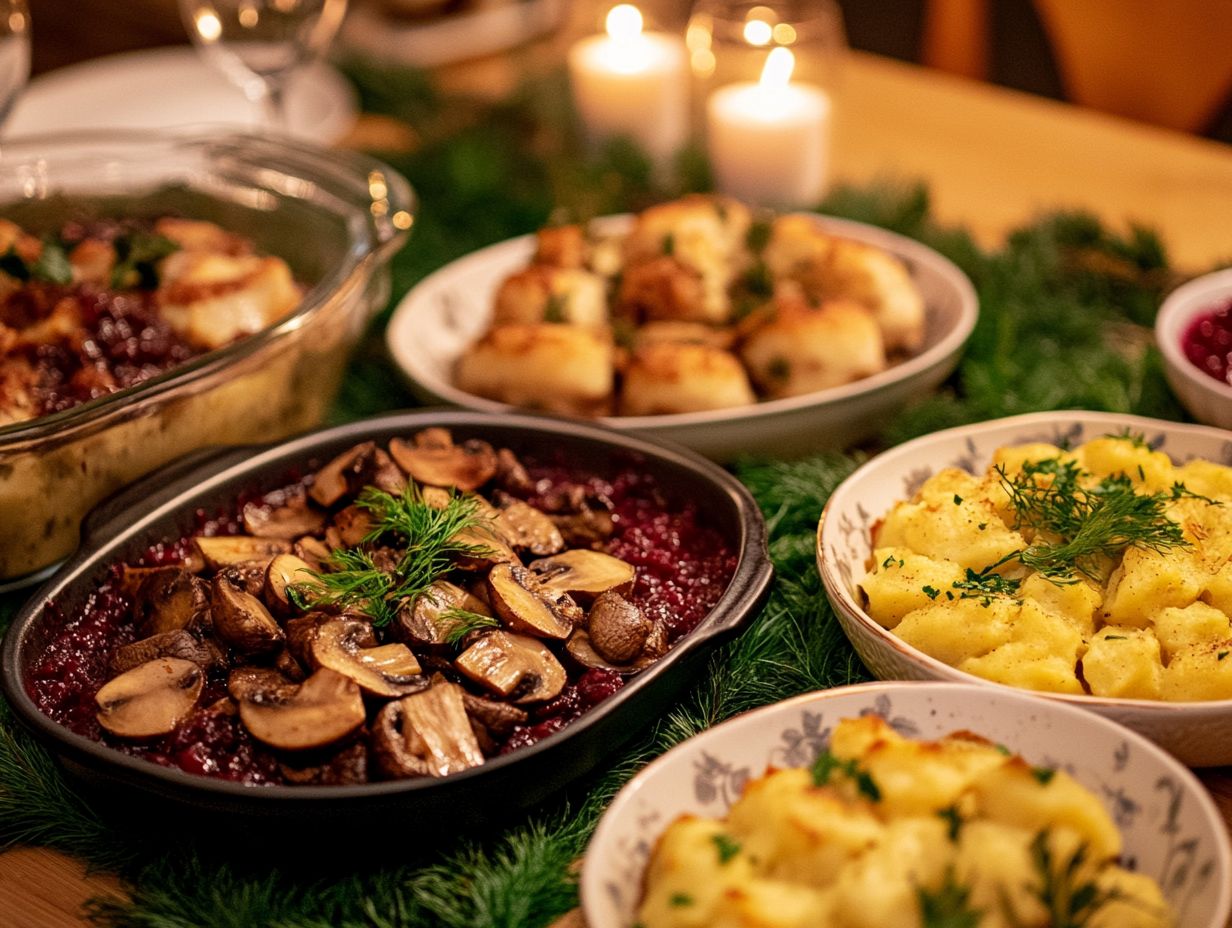
- Boil the potatoes in salted water for 15-20 minutes, or until fork-tender. Drain and let them cool slightly.
- While the potatoes are cooking, whisk together the coconut milk, 2 tablespoons of vegan butter, fresh dill, and lemon juice in a medium bowl. Season with salt and pepper to taste.
- Add the boiled potatoes to the sauce and toss to coat. Top with the remaining 3 tablespoons of vegan butter and serve warm.
Notes:
Store any leftovers in an airtight container in the refrigerator for 3-5 days. Reheat in a pot on the stove or in the microwave.
Vegan Swedish Desserts
Vegan Swedish desserts are Nordic confections that have been adapted for vegan diets. These treats enable individuals with dietary restrictions to enjoy traditional Nordic delicacies, such as cinnamon buns and Swedish apple cake, without sacrificing taste or texture. Vegan butter and alternative ingredients can be used to make these desserts just as delicious as the originals.
Cinnamon Buns
Cinnamon buns are a beloved traditional dish in Swedish cuisine, and they can be easily adapted into a vegan recipe that preserves the sweet, warm flavor of the original while using alternative ingredients. These delicious treats offer a traditional experience that is accessible to vegans and can be enjoyed by anyone who tries them. The dough for cinnamon buns is made from flour, plant-based milk, and dairy-free margarine, which, when combined, rises to a light and fluffy texture. Serve hot for a comforting and warming treat. A fragrant, rich filling is created by blending spices such as cinnamon and nutmeg with brown sugar. The entire process, from mixing to baking, takes only about two hours.
Swedish Apple Cake

Vegan Swedish Apple Cake Recipe
Ingredients:
- 4 apples, peeled and sliced
- cup maple syrup
- 1 tsp baking powder
- 1 tsp ground cinnamon
- cup almond milk
- cup coconut yogurt
- cup almond flour
- cup whole wheat flour
- tsp salt
- cup chopped walnuts
Instructions:
- Preheat the oven to 350 F (175 C) and grease a round 8-inch (20 cm) cake pan.
- In a bowl, combine the sliced apples with the cinnamon and maple syrup, mixing well.
- In a separate bowl, whisk together the dry ingredients. Make a well in the center and add the almond milk and coconut yogurt, mixing until smooth.
- Gently fold in the apple slices and chopped walnuts.
- Pour the batter into the prepared cake pan and bake for 30-35 minutes, or until a toothpick inserted into the center comes out clean.
- Allow the cake to cool for 5 minutes before removing it from the pan. Serve warm. Enjoy your delicious vegan Swedish apple cake!
Tips for Veganizing Swedish Recipes
Transforming Swedish recipes into vegan versions is a rewarding approach to enjoying traditional dishes while maintaining a plant-based lifestyle. This recipe modification process can accommodate various dietary needs, including gluten-free and freezer-friendly options. This process involves using key tips and substitutes that can enhance both the flavor and texture of your cooking.
Substitutes for Common Ingredients
Understanding which ingredients can be used in a recipe is essential for veganizing dishes. For instance, vital wheat gluten provides a meat-like texture, while nutritional yeast imparts a cheesy flavor, and vegan butter can be used as a dairy substitute in certain cases. Cooking tips such as using a food processor can also ease the preparation process. Egg substitutes such as flaxseed meal or aquafaba can replicate the binding properties of eggs, which are important in baking, while also adding a different depth of flavor. These substitutes can make the dish healthier without compromising on taste. Unsweetened coconut yogurt serves as an excellent alternative to sour cream, adding subtle sweetness without compromising the creamy texture. Additionally, almond or oat milk can introduce a delicious nutty flavor when replacing regular milk. Cooking cream made from soy or oats can also be used as a substitute in various recipes. By grasping the use of these ingredients, cooks can preserve the integrity of traditional Swedish recipes while adapting to modern dietary preferences, ensuring that their vision of flavor and texture is achieved. Preparation time can be reduced with proper meal prep techniques.
How to Add Authentic Swedish Flavors
The best way to incorporate the flavors of Swedish cuisine into vegan dishes is by using traditional spices such as allspice and nutmeg, along with cooking methods that reflect Swedish culinary traditions. Ground black pepper can also enhance the flavor of these dishes. Understanding the balance of spices is key; while Swedish meals are not spicy like Thai or Mexican cuisine, they should be robust and hearty. Spices like allspice and nutmeg are integral to many traditional dishes and can significantly enhance the flavor of vegan meals. Serving suggestions such as pairing with garlic mashed potatoes or lingonberry jam can make the meal more authentic. Common cooking techniques, such as simmering and baking, can impart the deep, comforting flavors characteristic of Swedish cooking. For example, slow-roasting root vegetables enhances their natural sweetness, while a quick saut of greens brightens the dish with aromatic herbs. Soups and stews often serve as the centerpiece of a Swedish meal, so starting with a rich vegetable stock can add depth and warmth reminiscent of long Swedish winters. By following these tips and utilizing traditional Swedish spices and cooking methods, even those unfamiliar with the cuisine can recreate dishes that honor Sweden’s culinary heritage in a vegan format.
